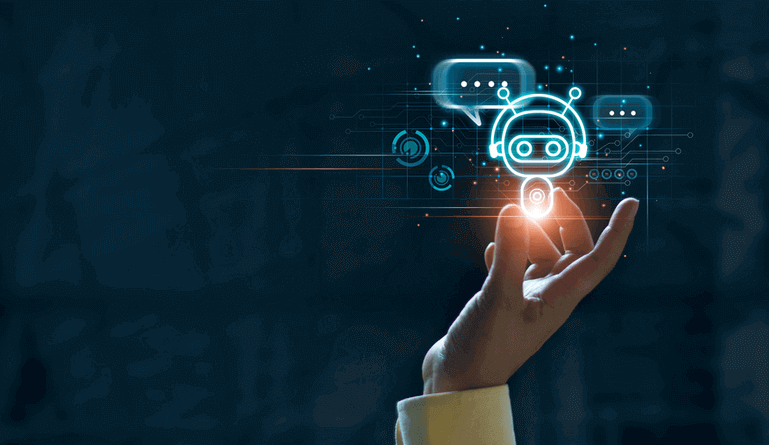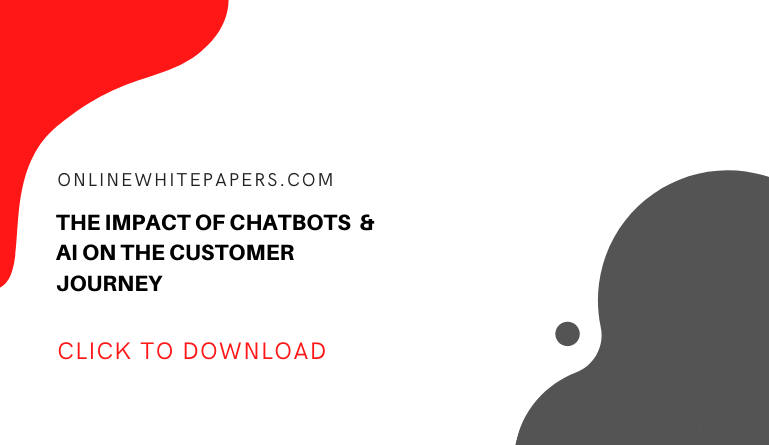A rapidly growing number of B2C and B2B businesses are using chatbots to execute simple tasks in their business processes. Chatbot assistants have the added benefit of freeing up support staff time while also enabling organizations to deliver a certain level of customer service during non-business hours.
What is a Chatbot?
Chatbots are computers programmed to mimic human conversation through voice or text interactions. For a chatbot to be integrated into a company’s service or sales department, low or no coding is required. This tool not only helps people with communication but also is helpful for smooth business operations.
The Evolution of Chatbots
While chatbots have gained some attention in recent years, the concept itself has been around for quite some time. Even before the introduction of personal computers Eliza, the first chatbot, was developed by the MIT Artificial Intelligence Laboratory, headed by Joseph Weizenbaum, in 1966 and was named after Eliza Doolittle in the musical My Fair Lady.
Thereafter, a physician at Stanford University – Kenneth Colby, created Parry – the next chatbot – to emulate a person with paranoid schizophrenia. Later, the A.L.I.C.E was introduced in 1995. It was created by Richard Wallace.
Several virtual assistants appeared following this. The first one to introduce conversational aides was Siri by Apple. Soon after Google introduced the Google Assistant for Android, the concepts gained greater popularity. Microsoft began by emulating its competitor, bringing Cortana to life.
What Does a Chatbot Do?
In order to successfully develop a chatbot, the natural language processing (NLP) engine should be chosen carefully. It needs a speech recognition engine if the user speaks to it, for example, via using voice. There must be decisions made on whether structured or unstructured discussions are wanted. A well-programmed will usually be simpler to design and build than one that converses unscripted since the scripting itself is reduced.
Because of the way they are generally scripted in B2B situations, they are typically employed to answer regular questions or conduct simple, repetitive calls to action. They can be useful for sales professionals who are short on time, as they can obtain phone numbers more quickly.
Ever since chatbots have really come a long way. They are AI-powered platforms, incorporating natural language processing, deep learning, and machine learning (ML) techniques, and they demand large data inputs. The voice recognition gets better at determining a suitable response, the more a person interacts with the bot.
The Various Types of Chatbots
- Quick-reply or scripted bots: These bots respond in an off-the-cuff manner or use scripts. They are the simplest that function as a tree hierarchy of decisions. These bots respond to users by responding to predetermined queries in a predictable way until the user’s question has been answered.
- Keyword recognition-based: These chatbots employ keywords that have been detected in prior interactions to understand what the user is typing and answer accordingly. A personalized message with user-specific keywords and AI is used in this bot to respond to the user’s request.
- Hybrid: Menu-based and keyword recognition-based chatbots are hybridized in this case. Users can decide to have their inquiries answered in-line, but if the keyword detection process fails they can visit the chatbot’s menu to make choices.
- Data-centric: These chatbots appear to be far more complex than the others listed above. They employ machine learning and artificial intelligence to record talks and interactions with customers, and then use these stored conversations and interactions to develop and expand over time. These bots use keywords, but instead of solely depending on keywords, they focus on what customers search for and how they ask for it to respond.
- Voice-enabled chatbots: The future of chatbot technology involves voice-enabled chatbots. Voice-enabled chatbots are made up of a combination of spoken dialogue from users and prompts that help provide responses or tasks to the user. Text-to-speech (TTS) and voice recognition application program interfaces (APIs) can be used to construct them. Apple’s Siri and Amazon’s Alexa are good examples of such intelligent assistants today.
Typical Use Cases for Chatbots
Different types of chatbots have been employed in online interactive games and instant messaging apps for quite some time now but have recently moved into business-to-consumer and business-to-business services and sales.
They are being used to help online shoppers find product information, such as the cost of shipping and delivery. Service departments have also adopted chatbots, helping service personnel to answer frequent questions. It can only handle a certain degree of complexity in a conversation before moving on to a human service representative.
In addition, there are several examples of chatbots that are often utilized as virtual assistants. There are virtual assistants from Apple, Amazon, Google, and Microsoft. Such products as the Amazon Echo, with Alexa, and the Google Home, as well as other services, such as Siri, utilize a personal chatbot.
How Chatbots are Changing Customer Experience
Chatbots are making it easier for customers to have positive customer experiences. In the fast-growing digital world, customers’ expectations are changing and increasing. Customers have come to expect 24/7 availability from firms, and they see customer service as equally crucial as the quality of the products or services offered. The following demonstrates the potential in transforming customer experiences:
- Reducing the amount of time a customer has to wait on hold and also offering immediate replies,
- Providing customers with around-the-clock customer assistance.
- Eliminating the threat of cruise crude human-to-human interactions that are caused by the emotions and mood of both the sales or service rep and the customer
- Streamlining conversations and decreasing wait time, which consequently minimizes the frustration and stress that some customers face
- Promoting a brand’s personality by incorporating personalized aspects into it.
- Personalizing each client experience by utilizing it that leverages artificial intelligence.
Advantages of Chatbots
- Cost-effectiveness – It is faster and cheaper to invest in one chatbot rather than building a specified, cross-platform app or recruiting more workers.
- Eliminates unnecessary labor – It can do jobs that need to be done regularly and at certain times. This empowers human employees to devote more time to their more critical responsibilities.
- Proactive customer engagement – Instead of being reactive to customers, firms used to wait for customers to contact them. Organizations are now able to proactively engage with customers using chatbots that help monitor and manage website usage.
- Monitoring and analyzing consumer data – You can improve your services and products or optimize your website by using feedback from each interaction obtained by using it. In addition to collecting users’ actions, they can also monitor customer behaviors and purchase patterns by tracking user data.
- Enhances customer engagement – Using social media enhances consumer engagement. Businesses may increase this involvement by integrating chatbots as part of the process.
Challenges of Using Chatbots
Although customer service benefits are one of the main perks, they, however, come with a number of challenges. The main difficulty is that its technology is young and hasn’t had enough time to establish itself in the market. However, AI-enabled bots can enhance their own behaviors with each interaction since they can learn from their mistakes. Unfortunately, the first encounters that lead to customers disengaging and turning away can cost businesses a lot of money.
Chatbot security is yet another problem that must be overcome. For users to share their personal data, they must trust. Its design should be secure and hack-proof to prevent the user interface from being accessed by hackers.
It can be challenging for a chatbot to comprehend how humans communicate due to the variety of methods used. Different users may abbreviate words, and misuse slang and acronyms.
The Future of Chatbots
In the near future, chatbots are projected to rise in popularity. 80% of brands plan to employ it by 2021 according to a survey conducted by Oracle.
New features and improved text and voice-enabled user experiences that are continuing to revolutionize the consumer experience will be introduced as artificial intelligence and machine learning grow.
Final Thoughts
Over the years, the best chatbots have really come a long way. AI technologies, including deep learning, natural language processing, and machine learning (ML) algorithms, are employed to create the current iterations of chatbot learning systems. The more an end-user interacts with the bot, the better voice recognition becomes at predicting an appropriate response.
The growing reliance on voice technology is predicted to be a common and required aspect of the IT ecosystem. In addition to the need to build a conversational agent that understands several languages, there has been an increase in attention given to creating a voice-based chatbot that can serve as an all-around conversational agent.







